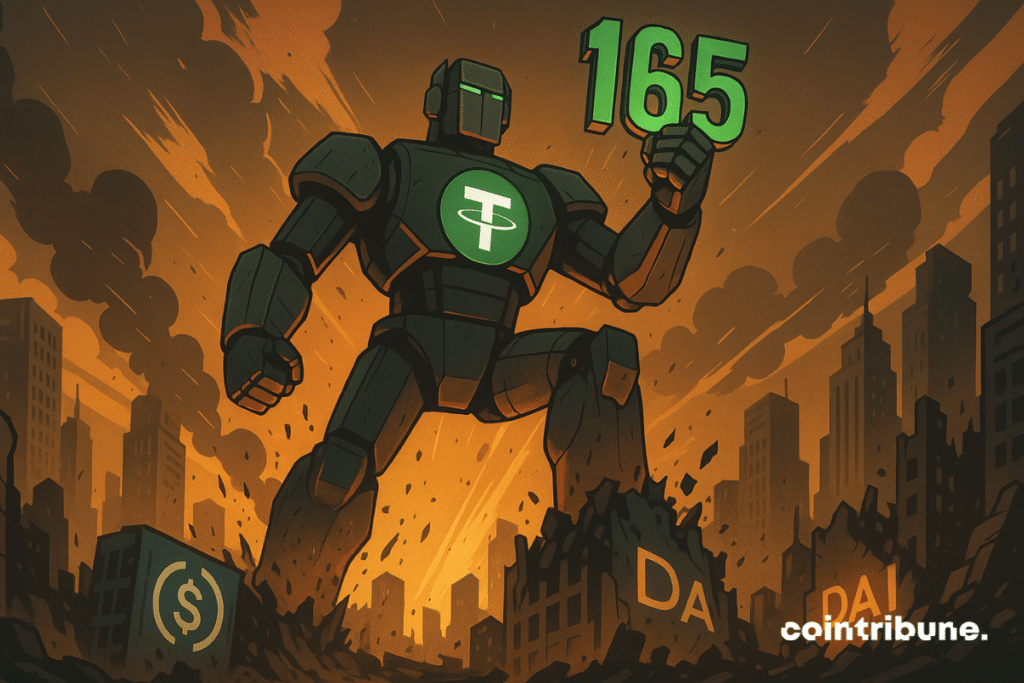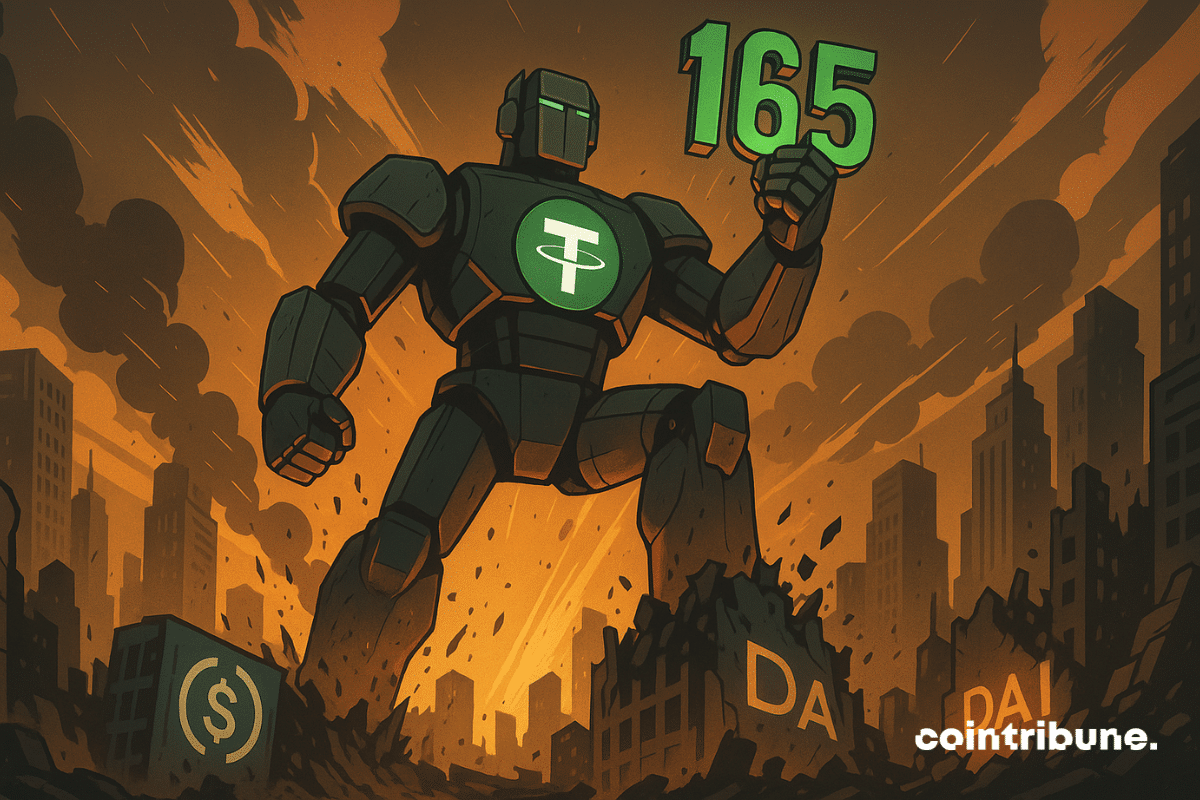10:00
4
min at reading ▪
The Stablecoins market has just exceeded the new historical level with a total capitalization of $ 273 billion. Tether consolidates his stunning domination with $ 165 billion, more than 60 % of this sparkling sector.


In short
- Tether (USDT) reached $ 165.25 billion in capitalization and dominated 60.49% of the Stablecoins market.
- The total Stablecoin sector increased by 1.28% to a total of $ 273.169 billion.
- USDC consolidates its second position with $ 66.8 billion, which is 7.56% per month.
- Regulators are more closely exploring this bridge between traditional financing and crypt.
Stablecoins of Tether reaches 165 billion
Tether consolidates his inadmissible giant position in the Stablecoins sector. With a capitalization of $ 165.25 billion, USDT added 730 million additional tokens in one week.
This growth of 0.44 % per week and 2.93 % per month reflects an institutional and specific demand that is always maintained.
This remarkable performance is explained by the central role of harness in the ecosystem crypto. Traders use it as a “reserve currency” for their operations, institutions use it for cross and protocol transfers, and define their benchmark. Its exceptional liquidity and its presence on all major exchanges strengthen this dominant position.
USDC Circle ran second with $ 66.8 billion. Its increase of 3.56 % in seven days and 7.56 % per month shows positive dynamics, although the gap with harness remains considerable. Circle focuses on transparency and compliance with regulations to attract institutions.
The real surprise, however, comes from USDE d’thena, which literally explodes the counters. With a monthly growth of 106 %, this synthetic stablecoin now reaches $ 10.99 billion. This magnificent performance distributes the established hierarchy and challenges traditional Stablecoins models supported by reserves.
Competition that intensifies in the tested sector
The Stablecoins landscape is diversified at high speed. Falcon USDF has a monthly growth of 86.35 %, while Paypal Pyusd increased by 40.26 %.
These performances reflect a race of innovation, where each actor seeks his differentiation: yield agriculture for Ethen, integrating electronic trading for Paypal or tokenization of real assets for Blackrock with his cell.
However, not all projects are experiencing the same success. The Blackrock Buidl, however supported by the US cash register, decreases by 15.61 % per month. This insufficient performance illustrates volatility associated with token financial products, even the “safest” look.
This dazzling expansion attracts the attention of global regulatory organs. Stablecoins now represent the basic bridge between traditional financing and crypto economy.
Their massive use in the cross -introduction and their disturbing potential is the disturbing central banks that are afraid of digital “dollarization” in the world economy.
US and European authorities increase consultations on supervision of these assets. The problem of transparency of reserves, especially for handcuffs, remains the main problem. Despite the past controversies, USDT maintains its growth, as evidenced that usefulness often takes precedence over regulatory considerations in the ecosystem.
With $ 165 billion, Tether embodies the strength and limits of a flourishing market. His hegemony remains indisputable, but the rise of the challenges announces a strategic battle. Innovations, institutional adoption and regulatory pressures are promoted as a new backbone of global digital financing.
Maximize your Cointribne experience with our “Read to Earn” program! For each article you read, get points and approach exclusive rewards. Sign up now and start to accumulate benefits.
Passionate Bitcoin, I like to explore meanders blockchain and cryptos and share my discoveries with the community. My dream is to live in a world where privacy and financial freedom is guaranteed for everyone, and I firmly believe that Bitcoin is a tool that can make it possible.
Renunciation
The words and opinions expressed in this article are involved only by their author and should not be considered investment counseling. Do your own research before any investment decision.

